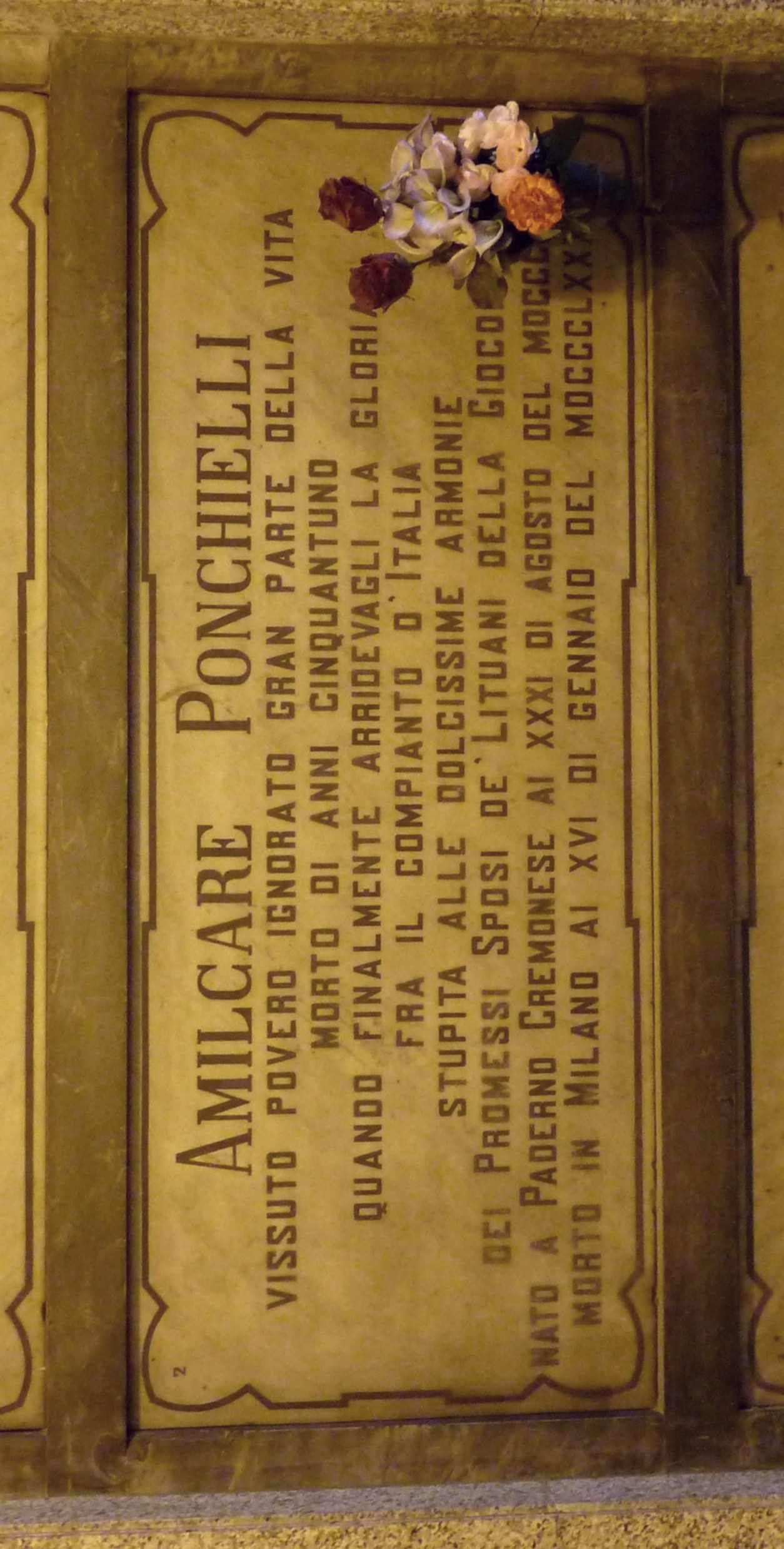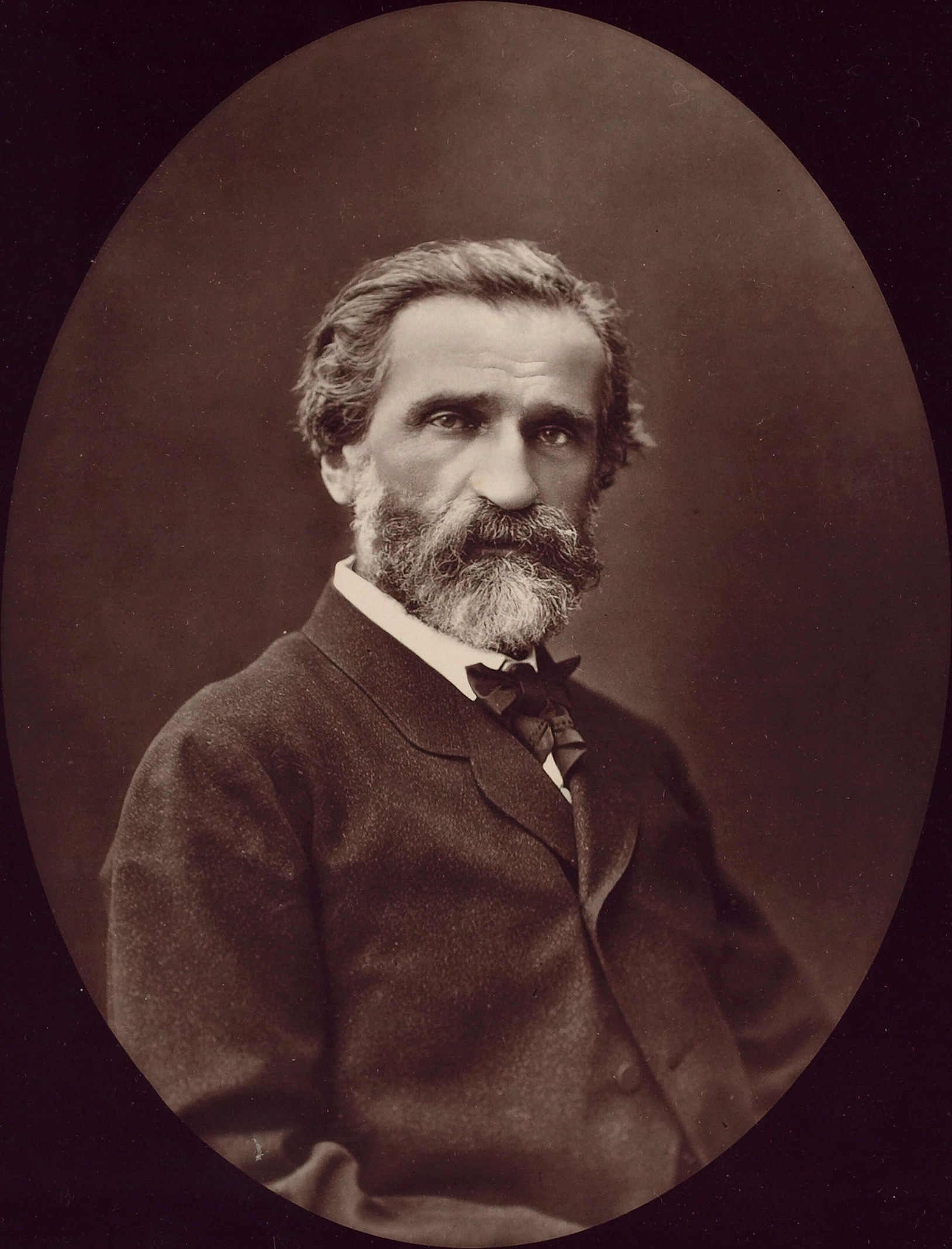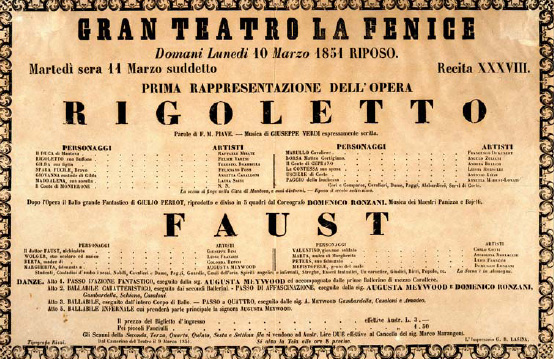|
Giulia Novelli
Giulia Novelli (1859 – 21 June 1932) was an Italian operatic mezzo-soprano. Early life Giulia Novelli was born in Rome in 1859. Career Giulia Novelli studied singing in Rome before making her professional opera debut in that city in 1875, as Pierotto in Gaetano Donizetti's ''Linda di Chamounix''. In the 1880s she had a very successful career at an international level. She performed at the Opéra de Monte-Carlo (1884), at the Teatro di San Carlo, Naples (1888, 1891), at the Teatro Colón in Buenos Aires (1888), at the Teatro Municipal in Rio de Janeiro and at the Liceu in Barcelona. In 1885, she sang the title role in ''Carmen'' at the Teatro de São Carlos in Lisbon. In 1888 she sang the role of Loretta in the world premiere of Alberto Franchetti's ''Asrael'' at Teatro Municipale in Reggio Emilia. In 1891 she sang the role of Eutibide in the premiere of Pietro Platania's '' Spartaco'' at the Teatro di San Carlo. In 1892 she took the role of Anacoana in the world premie ... [...More Info...] [...Related Items...] OR: [Wikipedia] [Google] [Baidu] |
Francesc Viñas
Francesc Viñas i Dordal (27 March 1863 – 14 July 1933) was a Spanish operatic tenor. He is also known by the Spanish version of his name, Francisco Viñas and the Italian version, Francesco Vignas. He was particularly known for his performances in the operas of Richard Wagner and sang in the first production of ''Parsifal'' outside Bayreuth.Metropolitan Opera Archives"Vignas, Francesco" Retrieved 7 February 2013. Life and career Viñas was born in Moià, a small town near Barcelona. At the age of 23, he enrolled in singing lessons at the Barcelona Conservatory where he studied under . After hearing him in some of the conservatory's concerts, Juan Goula, a principal conductor at the Gran Teatre del Liceu, urged him to study the title role of ''Lohengrin''. Viñas went on to make his operatic debut at the Liceu on 9 February 1888 in ''Lohengrin''. It was to become one of his signature roles.Aspinall, Michael (2006)Liner notes: ''The Complete Francisco Viñas''. Marston Records. R ... [...More Info...] [...Related Items...] OR: [Wikipedia] [Google] [Baidu] |
Asrael
''Asrael'' is a ''leggenda'' or opera in four acts by composer Alberto Franchetti and librettist Ferdinando Fontana. The plot, based on German fairy tale and folklore, displays the conflict between the spirit of evil and the spirit of Christian love, represented by Asrael and Nefta respectively. The work is Franchetti's first opera and displays strong influences of Giacomo Meyerbeer, Meyerbeer and Richard Wagner, Wagner, mixed with late 19th-century Italian idioms. The opera premiered at the Teatro Municipale di Reggio on 11 February 1888.Jürgen Maehder: "''Asrael''", ''Grove Music Online'' ed. L. Macy (Accessed January 30, 2009), (subscription access) The opera made its United States debut at the Metropolitan Opera on 26 November 1890 with Andreas Dippel in the title role.Metropolitan Opera ArchiveDippel, Andreas (Tenor) Accessed 25 January 2009. Roles References External links * {{Authority control Operas by Alberto Franchetti Italian-language operas 1888 operas Op ... [...More Info...] [...Related Items...] OR: [Wikipedia] [Google] [Baidu] |
Amilcare Ponchielli
Amilcare Ponchielli (, ; 31 August 1834 – 16 January 1886) was an Italian opera composer, best known for his opera ''La Gioconda''. He was married to the soprano Teresina Brambilla. Life and work Born in Paderno Fasolaro (now Paderno Ponchielli) near Cremona, then Kingdom of Lombardy–Venetia, Ponchielli won a scholarship at the age of nine to study music at the Milan Conservatory, writing his first symphony by the time he was ten years old. In 1856 he wrote his first opera—it was based on Alessandro Manzoni's great novel '' The Betrothed'' (''I promessi sposi'')—and it was as an opera composer that he eventually found fame. His early career was disappointing. Maneuvered out of a professorship at the Milan Conservatory that he had won in a competition, he took small-time jobs in small cities, and composed several operas, none successful at first. In spite of his disappointment, he gained much experience as the bandmaster (''capobanda'') in Piacenza and Cremona, arrangin ... [...More Info...] [...Related Items...] OR: [Wikipedia] [Google] [Baidu] |
Un Ballo In Maschera
''Un ballo in maschera'' ''(A Masked Ball)'' is an 1859 opera in three acts by Giuseppe Verdi. The text, by Antonio Somma, was based on Eugène Scribe's libretto for Daniel Auber's 1833 five act opera, '' Gustave III, ou Le bal masqué''. The plot concerns the assassination in 1792 of King Gustav III of Sweden who was shot, as the result of a political conspiracy, while attending a masked ball, dying of his wounds thirteen days later. It was to take over two years between the commission from Naples, planned for a production there, and its premiere performance at the Teatro Apollo in Rome on 17 February 1859. In becoming the ''Un ballo in maschera'' which we know today, Verdi's opera (and his libretto) underwent a significant series of transformations and title changes, caused by a combination of censorship regulations in both Naples and Rome, as well as by the political situation in France in January 1858. Based on the Scribe libretto and begun as ''Gustavo III'' set in Stockho ... [...More Info...] [...Related Items...] OR: [Wikipedia] [Google] [Baidu] |
Don Carlos
''Don Carlos'' is a five-act grand opera composed by Giuseppe Verdi to a French-language libretto by Joseph Méry and Camille du Locle, based on the dramatic play '' Don Carlos, Infant von Spanien'' (''Don Carlos, Infante of Spain'') by Friedrich Schiller. In addition, several incidents, of which the Forest of Fontainebleau scene and ''auto-da-fé'' were the most substantial, were borrowed from Eugène Cormon's 1846 play ''Philippe II, Roi d'Espagne''. The opera is most often performed in Italian translation, usually under the title ''Don Carlo''. The opera's story is based on conflicts in the life of Carlos, Prince of Asturias (1545–1568). Though he was betrothed to Elisabeth of Valois, part of the peace treaty ending the Italian War of 1551–59 between the Houses of Habsburg and Valois demanded that she be married instead to his father Philip II of Spain. It was commissioned and produced by the Théâtre Impérial de l'Opéra ( Paris Opera) and given its premiere at the ... [...More Info...] [...Related Items...] OR: [Wikipedia] [Google] [Baidu] |
Aida
''Aida'' (or ''Aïda'', ) is an opera in four acts by Giuseppe Verdi to an Italian libretto by Antonio Ghislanzoni. Set in the Old Kingdom of Egypt, it was commissioned by Cairo's Khedivial Opera House and had its première there on 24 December 1871, in a performance conducted by Giovanni Bottesini. Today the work holds a central place in the operatic canon, receiving performances every year around the world; at New York's Metropolitan Opera alone, ''Aida'' has been sung more than 1,100 times since 1886. Ghislanzoni's scheme follows a scenario often attributed to the French Egyptologist Auguste Mariette, but Verdi biographer Mary Jane Phillips-Matz argues that the source is actually Temistocle Solera. Elements of the opera's genesis and sources Isma'il Pasha, Khedive of Egypt, commissioned Verdi to write an opera to celebrate the opening of the Suez Canal, but Verdi declined. However, Auguste Mariette, a French Egyptologist, proposed to Khedive Pasha a plot for a celebratory ... [...More Info...] [...Related Items...] OR: [Wikipedia] [Google] [Baidu] |
Il Trovatore
''Il trovatore'' ('The Troubadour') is an opera in four acts by Giuseppe Verdi to an Italian libretto largely written by Salvadore Cammarano, based on the play ''El trovador'' (1836) by Antonio García Gutiérrez. It was García Gutiérrez's most successful play, one which Verdi scholar Julian Budden describes as "a high flown, sprawling melodrama flamboyantly defiant of the Aristotelian unities, packed with all manner of fantastic and bizarre incident." The premiere took place at the Teatro Apollo in Rome on 19 January 1853, where it "began a victorious march throughout the operatic world," a success due to Verdi's work over the previous three years. It began with his January 1850 approach to Cammarano with the idea of ''Il trovatore''. There followed, slowly and with interruptions, the preparation of the libretto, first by Cammarano until his death in mid-1852 and then with the young librettist Leone Emanuele Bardare, which gave the composer the opportunity to propose signifi ... [...More Info...] [...Related Items...] OR: [Wikipedia] [Google] [Baidu] |
Rigoletto
''Rigoletto'' is an opera in three acts by Giuseppe Verdi. The Italian libretto was written by Francesco Maria Piave based on the 1832 play ''Le roi s'amuse'' by Victor Hugo. Despite serious initial problems with the Austrian censors who had control over northern Italian theatres at the time, the opera had a triumphant premiere at La Fenice in Venice on 11 March 1851. The work, Verdi's sixteenth in the genre, is widely considered to be the first of the operatic masterpieces of Verdi's middle-to-late career. Its tragic story revolves around the licentious Duchy of Mantua, Duke of Mantua, his hunch-backed court jester Rigoletto, and Rigoletto's daughter Gilda. The opera's original title, ''La maledizione'' (The Curse), refers to a curse placed on both the Duke and Rigoletto by a courtier whose daughter the Duke has seduced with Rigoletto's encouragement. The curse comes to fruition when Gilda falls in love with the Duke and sacrifices her life to save him from the assassin hired by ... [...More Info...] [...Related Items...] OR: [Wikipedia] [Google] [Baidu] |
Giuseppe Verdi
Giuseppe Fortunino Francesco Verdi (; 9 or 10 October 1813 – 27 January 1901) was an Italian composer best known for his operas. He was born near Busseto to a provincial family of moderate means, receiving a musical education with the help of a local patron. Verdi came to dominate the Italian opera scene after the era of Gioachino Rossini, Gaetano Donizetti, and Vincenzo Bellini, whose works significantly influenced him. In his early operas, Verdi demonstrated a sympathy with the Risorgimento movement which sought the unification of Italy. He also participated briefly as an elected politician. The chorus "Va, pensiero" from his early opera ''Nabucco'' (1842), and similar choruses in later operas, were much in the spirit of the unification movement, and the composer himself became esteemed as a representative of these ideals. An intensely private person, Verdi did not seek to ingratiate himself with popular movements. As he became professionally successful, he was able ... [...More Info...] [...Related Items...] OR: [Wikipedia] [Google] [Baidu] |
La Favorita
''La favorite'' (''The Favourite'', sometimes referred to by its Italian title: ''La favorita'') is a grand opera in four acts by Gaetano Donizetti to a French-language libretto by Alphonse Royer and Gustave Vaëz, based on the play ''Le comte de Comminges'' by Baculard d'Arnaud with additions by Eugène Scribe based on the story of Leonora de Guzman. The opera concerns the romantic struggles of the King of Castile, Alfonso XI, and his mistress, the "favourite" Leonora, against the backdrop of the political wiles of receding Moorish Spain and the life of the Catholic Church. It premiered on 2 December 1840 at the Académie Royale de Musique (Salle Le Peletier) in Paris. Background Originally, Donizetti had been composing an opera by the name of ''Le Duc d'Albe'' as his second work for the Opéra in Paris. However, the director, Léon Pillet, objected to an opera without a prominent role for his mistress, mezzo-soprano Rosine Stoltz. Donizetti therefore abandoned ''Le Duc d' ... [...More Info...] [...Related Items...] OR: [Wikipedia] [Google] [Baidu] |
Teatro Carlo Felice
The Teatro Carlo Felice is the principal opera house of Genoa, Italy, used for performances of opera, ballet, orchestral music, and recitals. It is located on the side of Piazza De Ferrari. The hall is named for King Carlo Felice, and dates from 24 December 1824, when the Most Excellent Department of Theatres was established. On 31 January 1825, local architect Carlo Barabino submitted his design for the opera house which was to be built on the site of the church of San Domenico. The Dominican friars were moved elsewhere without delay or ceremony, and the first stone of the new building was laid on 19 March 1826. The inaugural performance of Bellini's ''Bianca e Fernando'' took place on 7 April 1828, even though the structure and decoration were not quite finished. The auditorium accommodated an audience of about 2,500 in five tiers (each with 33 boxes), a gallery above, and standing room in the orchestra pit. The acoustics were considered among the best of the time. For ne ... [...More Info...] [...Related Items...] OR: [Wikipedia] [Google] [Baidu] |
Cristoforo Colombo (opera)
''Cristoforo Colombo'' (''Christopher Columbus'', ) is an opera in four acts and an epilogue by Alberto Franchetti to an Italian libretto by Luigi Illica. It was written in 1892 to commemorate the 400th anniversary of Christopher Columbus' arrival in America. Commissioned by the city of Genoa, Columbus' birthplace, the opera deals with the voyage of discovery, its opposition by the Spanish authorities, Columbus' encouragement by Queen Isabella, and finally, after his difficulties and triumph, his anguish when he learns of her death. An essentially melodic opera only tangentially influenced by the emerging verismo style, it is harmonically rich, with obvious references to the work of Richard Wagner and Meyerbeer. The act 2 monologue contains a Rhine-like motif; after cries of ''Terra! Terra!'' the orchestra replies with Tristan-like ecstasy, and then a rainbow bridge-like triumph. Its anti-church elements have been noted, particularly in the opera's earlier versions: it is the c ... [...More Info...] [...Related Items...] OR: [Wikipedia] [Google] [Baidu] |







.jpg)